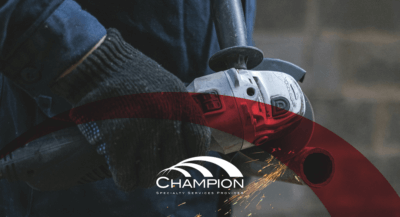This procedure aims to equip workers and management personnel with the technical knowledge to recognize hazards associated with hand and power tools and to establish safe work practices to eliminate tool-related risks.
General Guidelines
- Hand and power tools must be used in accordance with 29 CFR 1926.300-305. Employees using power tools are required to read, understand, and follow the applicable owner’s manual for the tools they use.
- Each day, the operator must inspect all tools before use to ensure they are in proper working condition. Any tool found defective must be immediately removed from service, tagged as defective, and not used until properly repaired per the manufacturer’s instructions.
- Notify personnel in the immediate area before using a powder-actuated tool. Both the operator and nearby personnel must wear safety glasses, face shields, and hearing protection.
- Always use tools only for their intended purpose.
- Keep tools perpendicular to the work surface unless the tool manufacturer specifies otherwise for certain applications.
- Maintain secure footing and balance when using tools. Avoid overreaching.
- Keep floors clean and dry to prevent slipping while using tools.
- Be aware of power lines and electrical circuits when operating power tools.
- Disconnect electric and pneumatic tools from their power source when not in use, or before adjusting, repairing, cleaning, or changing accessories such as blades.
- Tools must be secured when being used overhead to prevent falling to lower levels.
- Do not throw or drop tools from one level to another.
- Never force a tool; guide the tool and let the tool do the work.
- Return tools to their designated storage area when finished.
Hand Cutting Tools
Hand cutting tools are among the most common tools in some of our workplaces and, when misused, are responsible for a significant number of injuries. To prevent such injuries, all employees, supervisors, and managers must commit to the following:
Utility and Pocketknives
- Only safety-retractable knives are permitted. Fixed-blade knives or lock-position knives are prohibited unless a specific hazard assessment is conducted for insulation work tasks. This assessment must be documented in the Job Hazard & Risk Analysis (JHRA), include all PPE requirements, and receive upper management approval.
- When using a safety-retractable utility knife:
- Slowly insert the blade into the material.
- Make a linear cut over a predetermined safe distance. Ideal materials include plastic sheeting, drywall, and cardboard.
- Pocketknives are not permitted on job sites, including during breaks and lunch periods on Champion or client premises.
- Place the object to be cut on a flat surface (e.g., workbench, table, or ground) whenever possible.
- Always apply cutting pressure away from yourself and others in the work area.
- Wear cut level 4 Kevlar gloves when working with knives or sharp objects.
These measures are part of Champion Procedure 2.12. Additional details on specific sections of this procedure will be highlighted by your teams in February 2025.
Crew of the Month
This month, we’re shining the spotlight on our Champion Environmental Crew of the Month from the Syracuse, NY project! These hardworking professionals have tackled one of the toughest jobs in the field—rough terrain vacuum excavation for utility line pole placement—with skill, dedication, and an unwavering commitment to safety.
Navigating unpredictable weather and challenging terrain across New York State, this crew has consistently delivered top-tier performance without compromising safety. Their precision and focus ensure that every task is completed efficiently, no matter the obstacles.
What truly sets them apart is their 24/7 availability and relentless work ethic. They don’t just get the job done—they get it done safely, efficiently, and with pride.
Join us in celebrating this outstanding team for their dedication and for embodying what it means to be Champions!
Contact Champion




